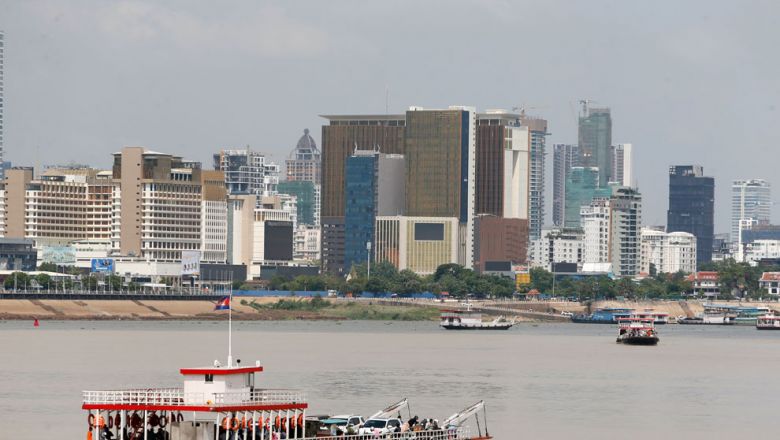Gov’t sticks with 5.6% growth forecast
Gov’t sticks with 5.6% growth forecast
The government has kept its baseline projection for Cambodia’s economic growth this year at 5.6 per cent, which was announced in late January, marking a sharp drop from the 6.6 per cent put forward in October, as the Ukraine conflict and geopolitical unrest caused regional and global economies to slow down, dented demand and sent inflation spiralling.

The current draft version of the Strategic Budget Plan 2024-2026 presents a baseline estimate of 6.6 per cent for Cambodia’s economic growth in 2024 – despite uncertainty in the outlook at the regional and global levels – with the industrial, service and agricultural sectors respectively pegged to grow by 8.5 per cent, 6.9 per cent and 1.1 per cent next year.
This was disclosed in a recent Royal Government of Cambodia (RGC) circular on the three-year budget plan and 2024 Law on Financial Management – next year’s edition of what is commonly called the “budget law”.
The Covid-19 crisis dragged down the approximately seven-per-cent average GDP (gross domestic product) growth rate registered by the Kingdom in the preceding two decades, although the circular noted that the economy has been gaining traction, expanding by 5.2 per cent in 2022.
The document predicted that growth this year would be hampered by a slowdown in the garment sector, which it attributed to reduced global demand, specifically in major export markets including the US and EU.
On the flip side, the non-garment manufacturing sector will most likely “grow as expected”, with “high-potential” export-oriented industries such as solar products and tyres as well as domestically-focused ones like food and beverage production and vehicle assembly leading the way, it said.
In June, Prime Minister Hun Sen similarly stated that despite some challenges, the Cambodian economy would grow by 5.6 per cent this year, adding that the Kingdom has set its sights on reaching upper-middle income status by 2030 after becoming a lower middle-income economy in 2015.
He was referring to the World Bank’s (WB) country classifications by income level, which are based on gross national income (GNI) per capita.
“The Cambodian economy grew by 5.2 per cent in 2022, and is forecast to expand by 5.6 per cent this year. The service sector is firmly on a path to recovery, predominantly due to increased demand from consumers,” the premier declared.
The International Monetary Fund (IMF) in April projected that Cambodia’s growth would accelerate from five per cent in 2022 to 5.8 per cent in 2023, and then 6.2 per cent in 2024 while the WB has maintained its economic projection for the Kingdom at 5.2 per cent in 2023.
The government forecast in the circular that the Cambodian construction and real estate sector would experience muted growth due to sluggish construction activity and unusually high home prices, but expressed optimism for the growing affordable housing market.
The agricultural sector may expand slower than previously expected partly due to slow growth in the crop sub-sector brought on by climatic changes. Rainy-season rice is tipped to be particularly heavily hit. The livestock sub-sector’s growth is also anticipated to decelerate, as frozen meat imports potentially lower pork prices and displace domestic production.
“The repercussions of the Russian-Ukrainian war and lingering effects of the Covid-19 crisis continue to impact Cambodia’s socio-economic landscape, especially for the country’s most vulnerable citizens,” the circular said.
“However, the RGC has been putting intervention measures into action, including stimulus packages for needy families, as a result of rising inflation, which lessen the burden on people’s livelihoods and will support economic growth in 2023 as well,” it said.
The government also predicts the average annual inflation rate to trend back to normal at 2.5 per cent this year and next as international prices of petrol and other commodities return to more typical levels.
For reference, the WB recognises Cambodia as a “lower-middle income” country – one rank below the “upper-middle income” designation – with GNI per capita of $1,700 for fiscal year 2022 (FY22) – the 12-month period ended June 30, 2022 – in nominal terms as calculated by the bank’s Atlas method.
In the current fiscal year 2024, group classifications are based on these calculations of FY22 GNI per capita, as follows: “low income” $1,135 or less; “lower-middle income” $1,136-4,465; “upper-middle income” $4,466-13,845; and “high income” $13,846 or more. The WB updates these thresholds each year on July 1.













